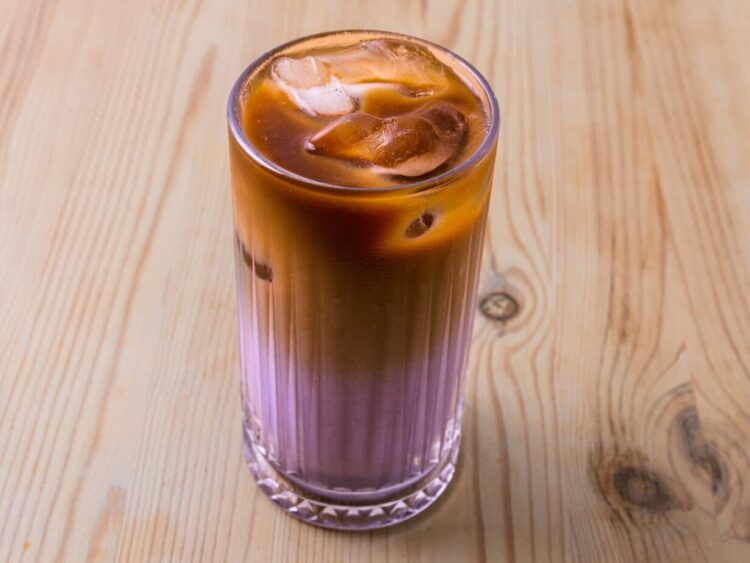A delicious ube latte recipe better than any coffee shop
The first thing you notice is the color: a lavender hue tending towards amethyst, swirling in the glass like an edible sunset. When the barista sets down an iced ube latte, its aroma is slightly nutty, as if vanilla met roasted chestnut.
What looks like a social media setup is actually a liquid heritage: the beloved Filipino dessert, ube halaya, relaxed with milk and, if you wish, enhanced with an invigorating shot of espresso.
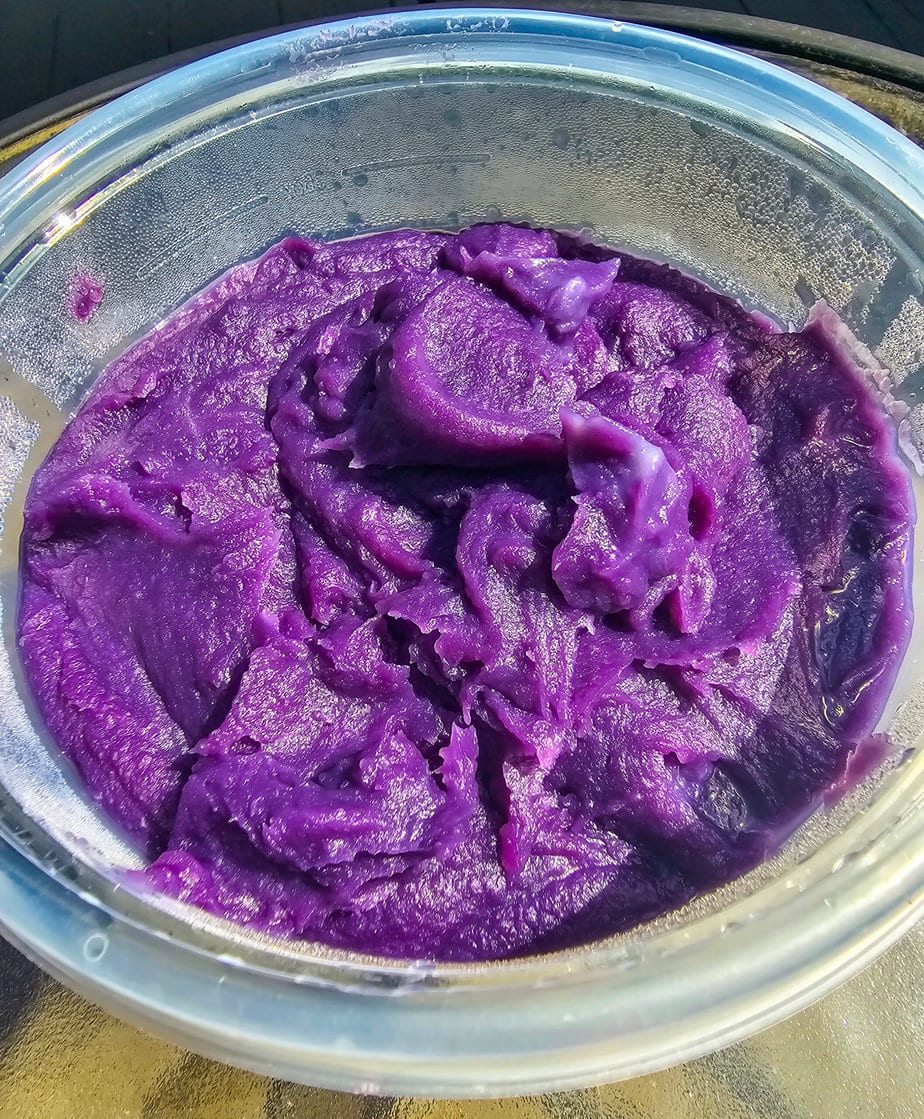
From Nilupak to Halaya: the Yam that Launched a Thousand Sips
Long before espresso machines whistled in Manila, purple yams were pounded in large wooden mortars to prepare nilupak. Spanish influence later introduced the term “halaya”, adapted from the word “jalea” (jelly). Despite this new name, the base remained simple: boiled ube, mashed “until smooth, enriched with coconut milk or carabao buffalo milk, then polished with sugar and fat until” it becomes a paste so firm that a spoon can stand upright in it.
Every December, families continue to stir the pot for an hour straight, waiting for the mixture to pull away from the sides and fill the kitchen with a sweet, earthy aroma. The deep purple, dye-free jars from the Good Shepherd convent in Baguio serve as a benchmark; many Filipinos living abroad treasure them like Christmas ornaments wrapped in newspaper.
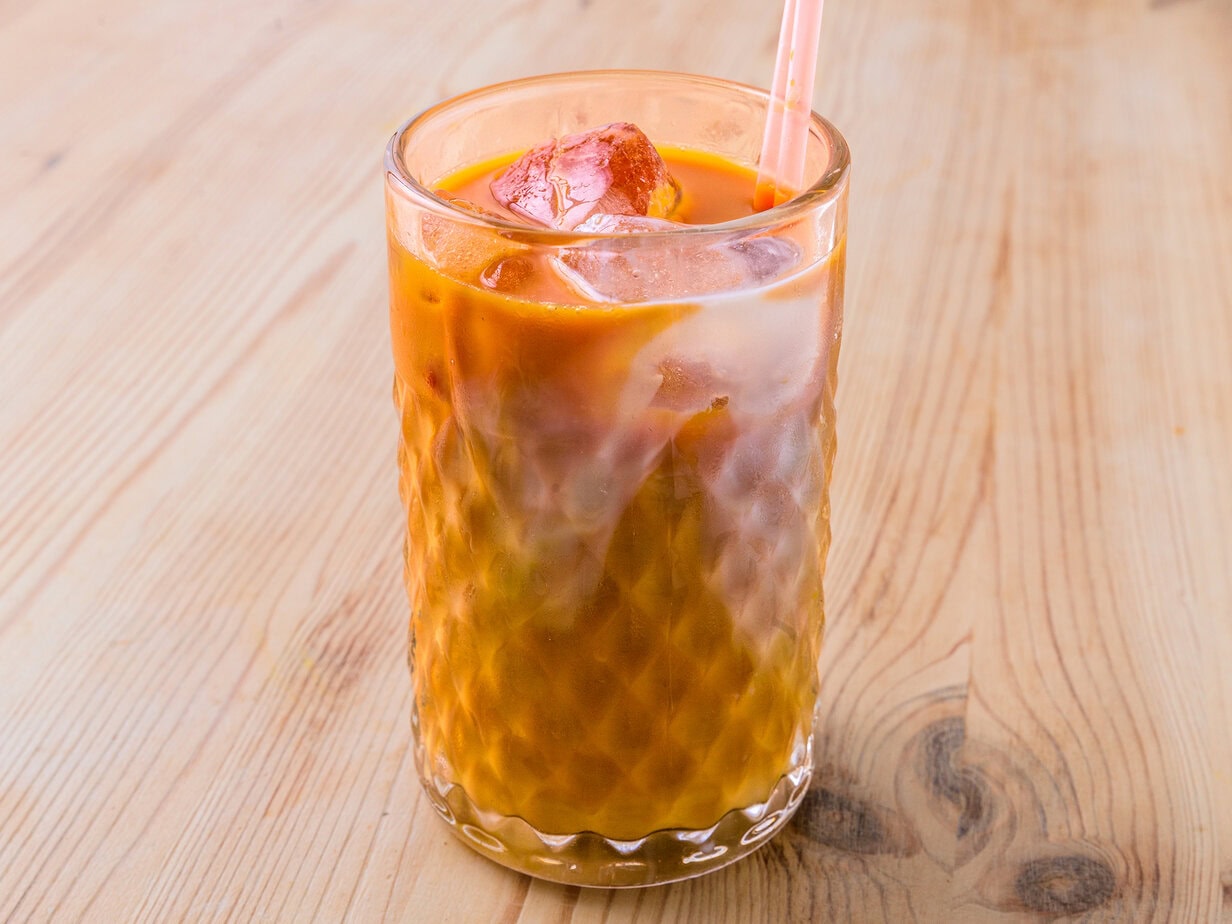
How Café Culture Transformed Halaya into Ube Latte
In the early 2010s, Filipinos in the diaspora began mixing ube halaya with milk (and sometimes espresso) and then sharing the purple drink online, inspiring cafés from Manila to New York to try their own versions.
Purists believe that a true ube latte should taste like “liquid halaya”, not purple syrup. Others wonder if coffee even has a place: some establishments often skip it and sell an iced drink without espresso simply called “ube latte”.
In Reddit comment threads, Filipinos exchange tips on rehydrating ube powder or sneaking frozen grated yam through customs: anything to avoid the taro flavors and artificial purple syrups that flourish in some West Coast bubble tea shops, often served with tapioca pearls. Some chains even bet on taro bubble tea with a hue that rivals that of the ube latte.
The Ingredients of a True Ube Latte
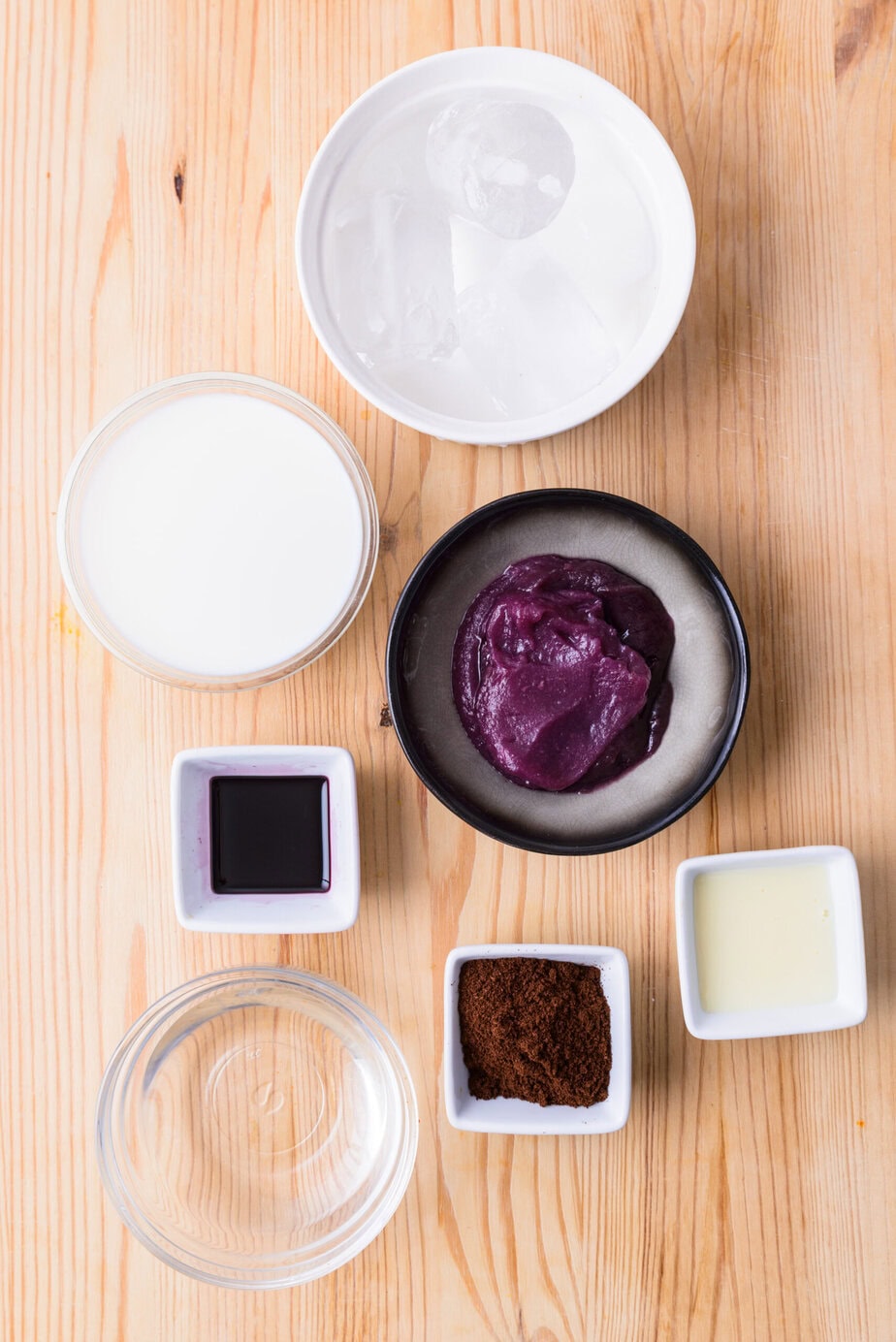
The Yam. Fresh ube offers a floral nut-vanilla depth that “no extract can match, but cooks far from Asian grocery stores can achieve a respectable result with frozen grated yam or quality powder rehydrated with” hot water. Whatever its origin, the yam must be cooked into jam or whipped into a silky paste: residual grains would ruin the smoothness in the mouth. Here I give the recipe for ube jam (ube halaya)
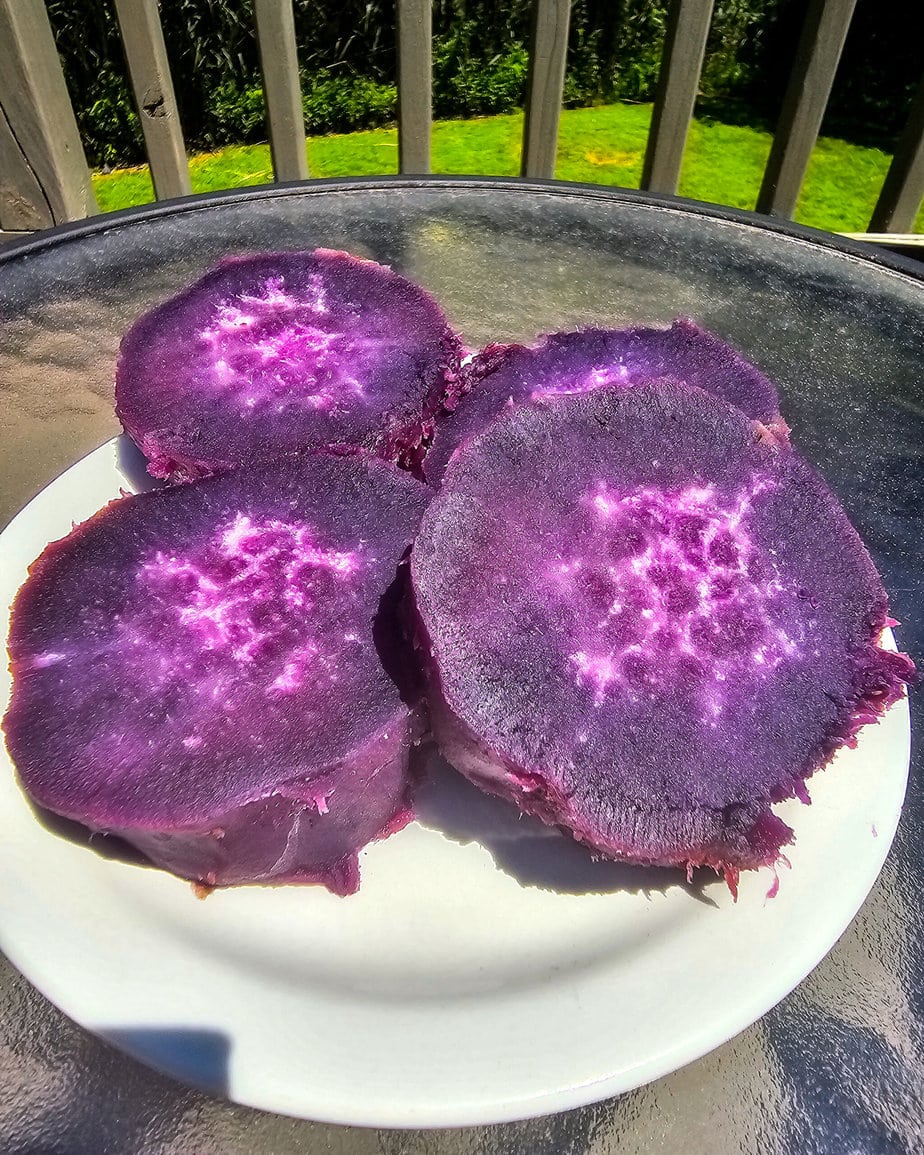
The Milk. Whole milk provides a richer texture, reminiscent of the creaminess of carabao buffalo milk, while condensed milk adds the caramelized note that many Filipino grandmothers swear by.
The Sweetener. A drizzle of sweetened condensed milk revives the color and thickens the texture, but cane sugar syrup is suitable for those who want to precisely control the sweetness. The golden rule remains moderation: too much sugar and the delicacy of the yam fades. Especially since the ube halaya is already sweetened
The Coffee. When included, espresso should support rather than overwhelm. Many baristas believe that two shots of medium roast espresso balance about 35 cl of ube milk, while a single shot can get lost in the sweetness of the yam and a dark roast dominates the palate.
The color index. The final shade should appear as a soft lavender to the naked eye, even from afar: neither murky gray nor fluorescent. If your drink shines like a highlighter, it likely owes its color to artificial dyes.

Authentic Ube Latte
Ingredients
- 2 tablespoons of hot water
- 3.5 tablespoons ube halaya homemade or store-bought
- 0.5 teaspoon ube extract for color
- 3 tablespoons coffee
- 2 tablespoons of sweetened condensed milk
- ice
- 120 ml of milk
- sugar optional
Instructions
- Prepare the coffee and refrigerate to cool3 tablespoons coffee

- In a bowl, mix hot water, ube halaya, and ube extract with a spoon until smooth2 tablespoons of hot water, 3.5 tablespoons ube halaya, 0.5 teaspoon ube extract
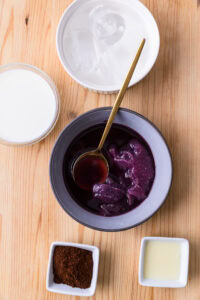
- Incorporate the condensed milk and mix well2 tablespoons of sweetened condensed milk
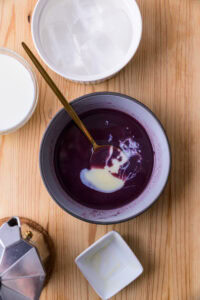
- Add the milk and mix well120 ml of milk
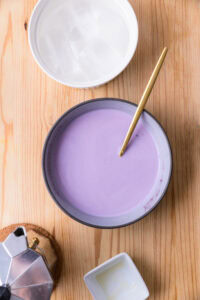
- Add ice and the mixture to a clear serving glassice
- Pour the ube mixture on top, followed by the coffee
- Taste and add 1 to 2 teaspoons of sugar if desiredsugar
Notes
Nutrition
Culinary sources
- What Is Ube? – Food & Wine : overview of purple sweet potato, flavor profile, and culinary uses
- “A Tale of Two Jams: Ube Halaya & Rasavalli Kizhangu Kali” – Pâticheri: comparative study between the Philippine jam and its South Indian equivalent
- Ube Halaya – Wikipedia (en): history, ingredients, and step-by-step preparation
- Ube Halaya – Wikipedia (tl): Tagalog version with regional variants
- Ube Halaya: the holiday purple-yam dessert – LAist: report on the popularity of this dessert during holidays
- Halayang Ube (Purple Yam Jam) – Kawaling Pinoy: classic recipe and practical tips
- What’s Cooking Now… Ube Halaya! – Market Manila : blog post with tips and variations
- Ube Halaya Recipe – The Unlikely Baker: small batch version with frozen ube
- Fish-Shape Ube Jam – I Can Do That! : playful presentation molded in the shape of a fish
- Ube vs. Taro: What’s the Difference? – Allrecipes : comparison of color, taste, and texture
- Ube Latte – Floured Frame: vegan drink with halaya and espresso
- The BEST Ube Latte (with Ube Cold Foam) – Bites by Bianca: coffee-shop style latte with ube cold foam
- Iced Ube Latte (Purple Yam Coffee) – Sift & Simmer: iced version and homemade syrup
- SNOICE Instagram: Ube vs Taro Milk Tea: visual comparison and customer survey
- TNB’s Iconic Ube French Toast – TikTok: viral video of French toast stuffed with ube
- Reddit Discussions on Ube: advice and experience feedback
• r/recipes – Ube Jam • r/AskCulinary – Experience with Ube • r/WheninElyu – First Ube Latte • r/espresso – Ube Latte + Espresso • r/MatchaEverything – Strawberry Ube Matcha Latte
